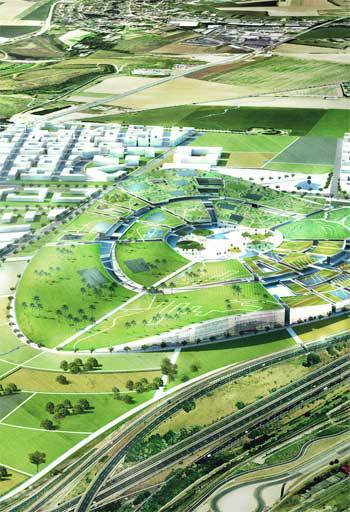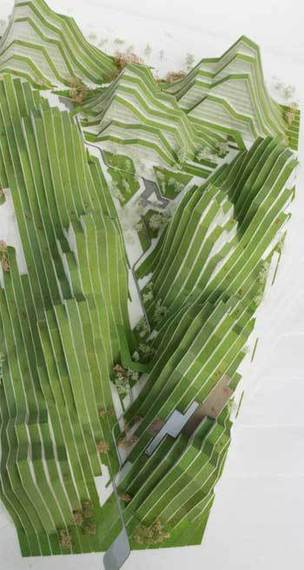
The dynamics of BIG, one of the world's hottest architecture and urban design firms, are laid bare in a new exhibition at the National Building Museum and companion book. Taking on increasingly ambitious projects all over the world, BIG, at its best, shows how building and landscape can be merged, creating novel experiences in the built environment. Much like Weiss/Manfredi and other firms with a multidisciplinary approach, BIG wants to create hybrid places. Bjarke Ingels, the founder of BIG, joked at the exhibition opening that he wanted to call the show, "BIGAMY: you can have it both ways."
Offering another way to understand the work, Ingels dismissed the one-size-fits-all solution of Modernist architects, aligning his projects with a long history of vernacular architecture that responds to local conditions. Just as the ancient temples at Angkor Wat used long passageways and buildings with apertures to stimulate air flow and create natural air-conditioning in the blistering heat of Cambodia or arctic igloos minimize thermal loss through their round form, BIG's buildings are designed to "respond to existing conditions." BIG particularly emphasizes the role of climatic conditions in their work, organizing the entire exhibition around the world's temperature zones, with the theme "Hot to Cold." The exhibition wraps around the entire second floor of the museum, showing the "journey across the planet's climate in 900 feet."
Just as buildings respond to the climate, they also shape it as well. Our buildings, as Ingels explained, account for a huge share of the world's energy and therefore carbon emissions. "With climate change, buildings must now perform more intelligently." Given a "good and bad building costs about the same," Ingels argued, "it's about how the ingredients are put together." Buildings can either adapt to their environment and make a positive contribution to climate change or do the opposite.
As you loop around the second floor of the museum, you see BIG's tactile models hanging from above, floating in each archway. Below the models are interactive explanations, often with videos. The high-tech, and most likely expensive, exhibition was financed by the Danish government and a Danish design non-profit.
Projects that leaped out really seek to integrate building and landscape. For example, the gorgeous Hualien Residences project in Taiwan features buildings created in the shape of limestone mountains, all covered in green roofs (see image above and below), certainly a response to Taiwan's environment.
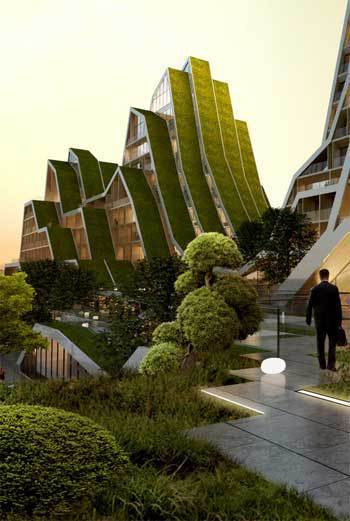
And then there's the BIG U, which won $335 million in the Rebuild by Design competition organized by the U.S. department of Housing and Urban Development (HUD), an impressive effort to spur more resilient coastal models in the wake of Hurricane Sandy. BIG explains how the landfill that has formed the southern tip of Manhattan is also the part of the island most at risk from massive storms. But by putting in various "pinch points," Manhattan could add "flood compartments, much like the hull of a ship." These compartments can open and close depending on conditions. And berms can double as parks. Public space as infrastructure, another smart hybrid.
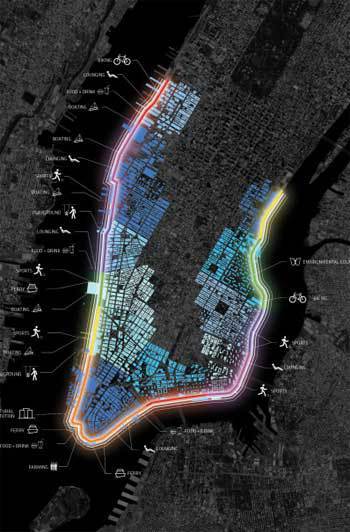
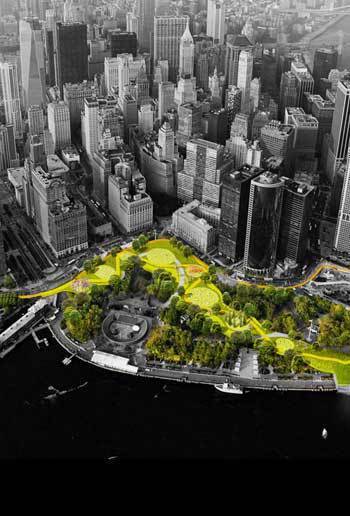
And lastly, taking their ideas up to yet another scale: BIG is part of a team now working on Europa City in Paris, which is their take on "landscape urbanism." With equal part cheek and smarts, BIG writes in the exhibition notes: "Europa City: 100 percent landscape and 100 percent building = 200 percent habitat!"
